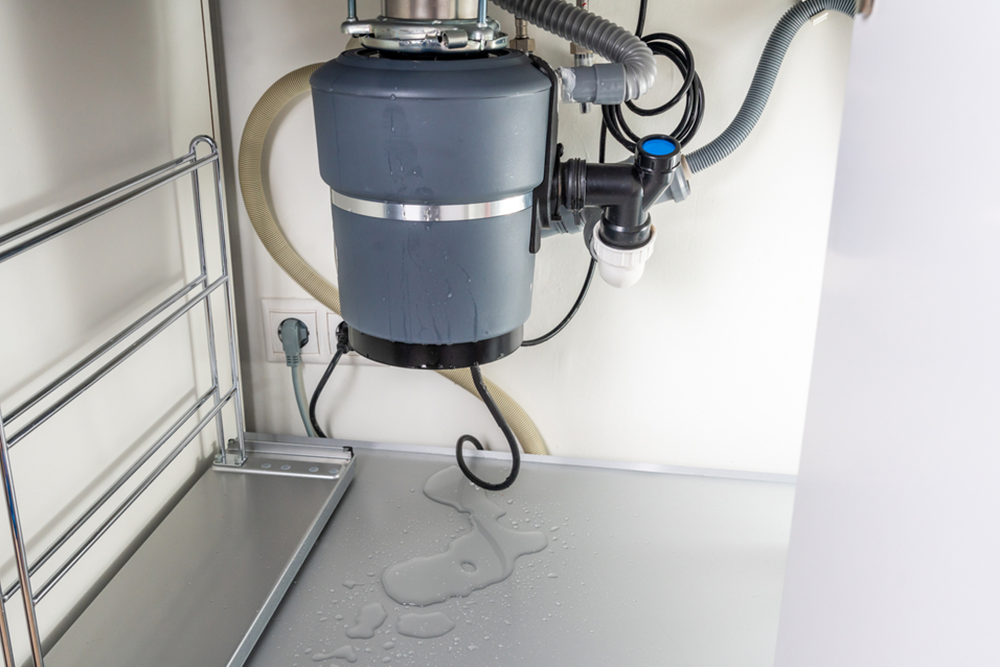My Definitive Guide to Fixing a Leaky Waste Disposal Unit
My Definitive Guide to Fixing a Leaky Waste Disposal Unit
Blog Article
We've uncovered this article relating to Why Is directly below on the net and reckoned it made perfect sense to write about it with you on this page.

Garbage disposals are vital cooking area devices that assist in dealing with food waste effectively. However, a leaking waste disposal unit can be an aggravating and unpleasant problem to deal with. Thankfully, numerous leaks can be dealt with conveniently with a couple of straightforward steps. In this article, we will discuss exactly how to deal with a leaking waste disposal unit successfully.
Introduction
Waste disposal unit are installed under cooking area sinks and are developed to shred food waste into smaller sized items, permitting it to pass through the plumbing system quickly. While these tools are generally reliable, leaks can take place over time because of damage, loosened connections, or damage to the system.
Usual Reasons For Leaks in Waste Disposals
Worn Seals and Gaskets
Seals and gaskets play an important role in avoiding water from dripping out of the garbage disposal. Over time, these elements can degrade, bring about leaks around the disposal unit.
Loose Connections
The links in between the waste disposal unit and the plumbing system can become loosened with time, causing water to leakage out throughout operation.
Splits or Holes in the Disposal Device
Physical damages to the garbage disposal, such as splits or openings in the housing, can likewise cause leaks.
Identifying the Source of the Leakage
Prior to trying to repair a leaking waste disposal unit, it is vital to recognize the source of the leakage. This can generally be done with visual examination or by carrying out straightforward tests.
Visual Assessment
Inspect the garbage disposal device thoroughly for any indicators of water leakage. Pay attention to areas around seals, gaskets, and link points.
Checking for Leakages
One means to check for leakages is by running water via the disposal device and checking for any noticeable indicators of leak.
Devices and Products Needed for Taking Care Of a Leaking Waste Disposal Unit
Before starting the repair work procedure, gather the required tools and materials, consisting of a screwdriver, flexible wrench, plumbing professional's putty, substitute seals or gaskets, and epoxy or patching material for repairing fractures or openings.
Step-by-Step Guide to Dealing With a Dripping Garbage Disposal
Turn Off the Power
Prior to attempting any kind of repair work, make certain that the power to the waste disposal unit system is turned off to stop the risk of electric shock.
Situate the Leak
Recognize the specific location of the leakage and establish the cause.
Tighten Links
Make use of a wrench to tighten any kind of loose links in between the disposal system and the pipes system.
Replace Seals or Gaskets
If the leak is because of used seals or gaskets, eliminate the old components and change them with brand-new ones.
Patching Splits or Openings
For fractures or holes in the disposal unit, usage epoxy or a suitable patching material to secure the broken area.
Evaluating the Garbage Disposal After Repair Service
Once the repair work is total, evaluate the waste disposal unit by running water through it to ensure that the leakage has actually been dealt with.
Preventive Maintenance Tips to Prevent Future Leaks
To prevent future leakages, it is essential to perform regular maintenance on your waste disposal unit. This includes maintaining it clean, preventing putting non-food products or difficult items down the disposal, and regularly checking for leaks or other concerns.
Verdict
Finally, dealing with a leaking garbage disposal is a fairly uncomplicated procedure that can be finished with standard tools and products. By complying with the steps outlined in this article and practicing preventive upkeep, you can keep your garbage disposal in good working problem and stay clear of pricey repairs in the future.
What to Do About a Leaking Garbage Disposal
A leaking garbage disposal often goes unnoticed until you confront a sopping cabinet, a foul-smelling puddle, or an audible drip-drip-drip from the unit. The fix can be frustrating, too, because the leak can stem from a number of components in the system. Fortunately, with a little sleuthing, you can zero in on the leak and—depending on the exact location—stop the icky oozing and repair the component that caused it. Worst case scenario, if it turns out that the garbage disposal must be replaced, installing a new one is a reasonable do-it-yourself task for those with basic plumbing skills. Read on to keep the cash you’d otherwise hand over to a pro.
Prepare to find the leak
Prior to testing the garbage disposal for leaks, unplug it at the wall outlet and turn off the power from the breaker box to prevent electrical shock. Then insert a watertight sink stopper into your sink drain and wipe the unit dry with a clean cloth. In any handy container, mix a few drops of food coloring into a few cups of water, and pour the dyed water onto the sink stopper to help you locate the leak.
Investigate the source
the top, where the disposal meets the sink drain the side, where the dishwasher hose or main drain pipe connects to the disposal or the bottom of the unit Inspect each of these locations while gliding a light-colored rag over the unit; the dyed water will readily show on the rag and reveal the location of the leak. If a leak isn’t immediately apparent, remove the sink stopper and pour a few more cups of dyed water down the sink drain, then check for leaks again. Leaks near the top of the unit are more likely to show themselves while the sink is plugged, while side and bottom leaks are more noticeable while the sink is unplugged.
The metal sink flange that sits directly inside the sink drain is typically sealed around the top with plumber’s putty (a clay-like sealant) and then secured from under the sink with bolts. If the plumber’s putty deteriorates, or the bolts loosen, the flange can no longer form a watertight seal between the sink drain and the disposal—which could cause a leak at the top of the unit.
To reseal the leaky flange, you must first detach the garbage disposal. Start by loosening the screws securing the main drain pipe to the disposal, then loosen the screws in the metal clamp securing the dishwasher hose to the disposal and detach the drain pipe and dishwasher hose from the disposal. Loosen the screws in the mounting ring that connects the disposal to the metal mounting assembly beneath the sink, then pull down the disposal and carefully set it on a clean, dry surface. Loosen the bolts in the mounting assembly with a wrench, then pull down the mounting assembly and set it near the disposal.

As a person who reads on Why Is , I assumed sharing that piece of content was smart. Please take the opportunity to distribute this post if you enjoyed reading it. Kudos for your time. Don't hesitate to stop by our blog back soon.
Schedule Appointment Now Report this page